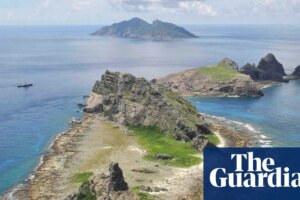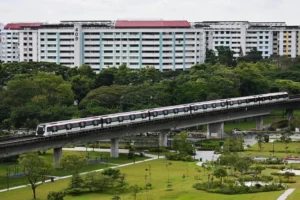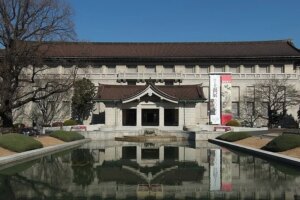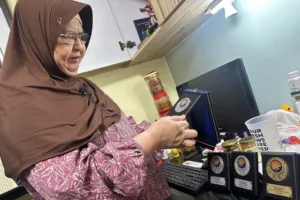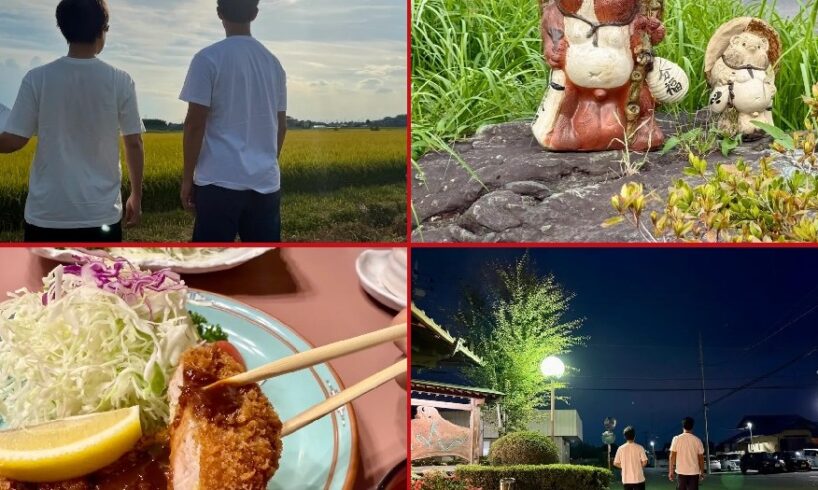
Our northern Kanto reporters team up and head to Gunma for a look at this part of Japan that gets overlooked by tourists.
As you can probably guess from their differing family names, our Japanese-language reporters Masanuki Sunakoma and Takamichi Furusawa are not blood-related siblings. However, as of today, they are brothers…Kita Kanto Brothers!
Kita is the Japanese word for “north,” and Kanto is the name of the region of east Japan that includes Tokyo, Chiba, and Kanagawa Prefectures along its southern side. But while southern Kanto gets the majority of the region’s travel and tourism attention, there’s cool stuff to see, do, and eat in northern/Kita Kanto too. With Masanuki living in Tochigi and Takamichi in Gunma, both prefectures in Kita Kanto, they’ve decided to combine their powers to shine a spotlight on this often overlooked, off-the-beaten-tourist-path part of Japan.
▼ Gunma resident Takamichi
▼ Tochigi resident Masanuki
Eager to test the powers of their newly formed brotherhood, Masanuki and Takamichi focused their minds and filled their hearts with such strong loving thoughts of Kita Kanto…
…that they broke the limits of time and space, warping to their first destination in this series.
Masanuki: “Whoa…where are we…?”
Takamichi: “Looks like Tatebayashi Station.”
Tatebayashi is a town in Gunma Prefecture, about 70 minutes north of Tokyo by train or car. That makes it close enough to visit in a day-trip from the capital, but still far enough away to have its own unique vibe and appeal for when you want to escape the hectic hustle and bustle of the big city.
▼ From Tokyo to Tatebayashi Station
You’ll notice a lot of imagery for Calpis, the milky soft drink known in some overseas markets as Calpico, inside Tatebayashi Station, since Tatebayashi has both a Calpis bottling center and a Calpis museum that covers the history and science of the beverage. It’s definitely worth a visit for fans, as we learned when we stopped by on a previous day in Tatebayashi.
Once you step outside the station, though, you’ll start seeing statues of tanuki.
Japan’s quirkily adorable racoon dogs feature prominently in several folktales, but one of the most famous is Bunbuku Chagama, a story about a tanuki that disguises itself as a tea kettle at a temple.
As with many centuries-old legends, there are multiple versions of the tale, but something they have in common is that the temple is Morinji, an actual temple in Tatebayashi.
Morinji is an eight-minute walk from Morinjimae Station, which is just one stop/three minutes by train from Tatebayashi Station, as shown in the map below.
But it’s even quicker, if you can, to activate your Kita Kanto Brother powers…
…and warp there!
Morinji is a Soto Zen temple that was built in 1426. More than 20 tanuki statues are positioned on the temple grounds, and no admission is charged for visiting the temple itself. There’s also a “treasure house”/museum with historical artifacts, including the tea kettle that’s said to have been the inspiration for the Bunbuku Chagama legend, that’s open from 9 a.m. to 4 p.m. on Mondays, Fridays, and weekends, with tickets priced at 300 yen (US$2).
With sunset approaching, it was time for the Kita Kanto Brothers to start thinking about dinner, and Takamichi had a special place in mind: Fukuyoshi, which is about a five-minute drive from Morinji.
Fukuyoshi is a tonkatsu (pork cutlet) restaurant that’s popular with locals, especially for special occasions. As such, it’s a little pricier than the average cutlet joint, but still within the realm of affordable luxuries.
Masanuki’s eyes were immediately drawn to the Joshu Mugibuta (Joshu Barley Pork) Pork Loin Katsu Set Meal, which comes with rice, shredded cabbage, miso soup, pickles, and, most importantly, a deep-fried cutlet. While it’s not as famous as Kobe beef or Hokkaido sea urchin, in-the-know foodies will tell you that Gunma produces some of Japan’s tastiest pork, and Joshu Mugibuta is a premium local variety for which the animals’ diet consists mainly of barley, which reduces gaminess and produces lean but flavorful and tender meat.
▼ Joshu (上州) is the old name for the part of Japan that’s now Gunma Prefecture.
Eager to try this regional delicacy, Masanuki decided that yes, he was going to splurge on the 2,380 yen (US$16) Joshu Mugibuta set meal, and he had no regrets about doing so, not when the server brought the big and beautiful cutlet to the table, or when he started eating it and found it every bit as delicious as he’d hoped it would be.
Takamichi, meanwhile, opted for Fukuyoshi’s standard hire/tenderloin cutlet set, for 1,740 yen, which was excellent as well.
Aside from Morinji Temple and the Calpis museum/factory, Tatebayashi also boasts the Gunma Museum of Art and its outdoor sculpture collection, a park named Tsutsujigaoka that’s beautiful in azalea season, and one of the best udon noodle restaurants in the country, all without the massive crowds you’ll have to contend with at Japan’s more famous tourist attractions.
It turns out that the Kita Kanto Brothers can’t teleport when they’re full of tonkatsu, so they had to get home using non-magical methods. Once they’re done digesting, though, they’ll be back again with more hidden gems of northern east Japan.
Related: Morinji Temple, Fukuyoshi, Gunma Museum of Art, Tsutsujigaoka
Photos ©SoraNews24
● Want to hear about SoraNews24’s latest articles as soon as they’re published? Follow us on Facebook and Twitter!
[ Read in Japanese ]
Like this:
Like Loading…
